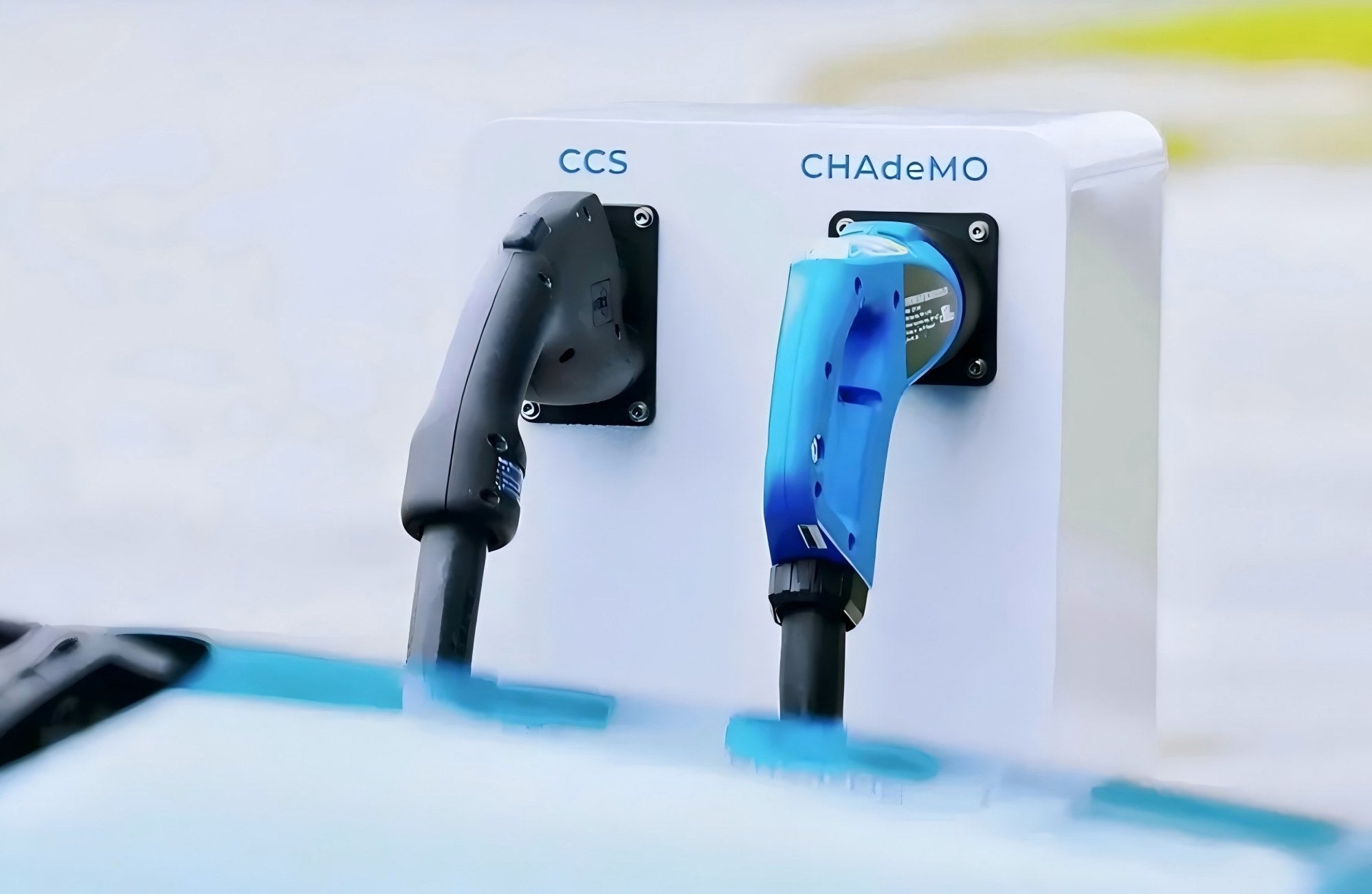Introduction: Why Your Plug Doesn’t Fit Sometimes
As electric vehicles become more popular, many owners encounter a frustrating problem when traveling abroad — the charging plug doesn’t fit.
This is not a technical fault but the result of different regional charging standards.
Today, two DC fast-charging systems dominate the global market:
CCS (Combined Charging System) — used mainly in Europe and North America.
CHAdeMO — originated in Japan and still widely adopted across Asia.
For example, a Nissan Leaf owner in Europe may find only CCS stations, while a Volkswagen ID.4 driver in Japan struggles to locate a CCS charger.
To solve these incompatibilities, CCS ↔ CHAdeMO adapters act as translators between two communication systems, enabling safe, reliable cross-standard charging.
Understanding CCS and CHAdeMO
CCS (Combined Charging System)
Developed by European manufacturers such as BMW, Mercedes, and Volkswagen.
Supports up to 350 kW charging power on some stations.
Uses PLC (Power Line Communication) for intelligent control and authentication.
Integrates AC and DC connections in one plug for convenience.
CHAdeMO
Created by TEPCO, Nissan, and Mitsubishi in Japan.
Communicates through the CAN bus protocol.
Typical power range: 50–100 kW depending on the charger.
Favored for reliability and compatibility with early EV models.
In short, CCS focuses on speed and smart communication, while CHAdeMO emphasizes stability and proven reliability.
Because they use different communication languages, adapters are necessary when connecting between them.
CCS to CHAdeMO Adapter: Powering Japanese EVs on European&America Roads


Purpose
Designed for CHAdeMO-port vehicles — such as Nissan Leaf, e-NV200, and Mitsubishi Outlander PHEV — to charge at CCS fast-charging stations.
Advantages
Broader network access: Enables Japanese-standard vehicles to use popular European CCS networks like Ionity, ABB, or Kempower.
High-power capability: Up to 100–120 kW, depending on vehicle limits.
Smart handshake function: Detects charger protocol automatically for stable operation.
Ideal for travelers: An essential accessory for CHAdeMO car owners driving across goble.
Considerations
Charging rate is ultimately limited by the car’s BMS (Battery Management System).
Firmware updates are recommended to maintain compatibility with newer CCS stations.
CHAdeMO to CCS Adapter: A Practical Backup for CCS Vehicles

Purpose
Allows CCS-port vehicles — such as VW ID.4, Hyundai IONIQ 5, and BMW i4 — to charge at CHAdeMO stations.
Advantages
Highly useful in Japan: CHAdeMO remains the dominant fast-charging network.Compact and portable: Lightweight design makes it easy to store in the trunk.Backup charging option: Suitable for long trips or rural areas with legacy CHAdeMO chargers.
Charging Power and Performance

Regardless of direction, the adapter does not increase your vehicle’s charging power.
Its job is to convert signals, not to boost current.
The actual speed is limited by the vehicle’s internal system and the charger’s maximum output.
Example: a 400 V × 250 A system equals 100 kW. Even if the station offers 350 kW, the car will still charge at 100 kW.
The adapter is a bridge, not a booster.
Compatibility Checklist Before Charging
Before every trip or charging session, verify the following:
Charger type: CCS1, CCS2, CHAdeMO, NACS, or GB/T.
Vehicle port: Confirm your car’s interface in the user manual.
Protocol match: CCS uses PLC; CHAdeMO uses CAN.
Firmware version: Update the adapter regularly to avoid handshake failures.
Power rating: Ensure the adapter’s rated current and voltage meet or exceed your vehicle’s DC input capability.
Taking these precautions avoids connection errors and ensures safe operation on any charging network.
Safety and Maintenance Tips

- Use adapters that carry CE and FCC certifications with IP54 or higher waterproof protection.
Avoid exposing the adapter to heavy rain unless rated accordingly.
Inspect both connectors for dust or corrosion before use.
Update firmware via USB to stay compatible with new charging protocols.
Purchase only from verified manufacturers with proven R&D and quality assurance.
- Following these steps ensures both safety and long-term performance during every charging session.
Frequently Asked Questions (FAQ)
Q1. Are CCS to CHAdeMO and CHAdeMO to CCS adapters interchangeable?
No. Each works in only one direction based on your vehicle’s interface type.
Q2. Can I use them on any charger?
Most modern chargers are compatible, but very old units may require firmware updates.
Q3. Do adapters affect safety?
Certified adapters are safe if used correctly and properly connected.
Q4. Do they increase charging speed?
No. The adapter only converts communication; power limits remain unchanged.
Q5. How often should I update firmware?
Check every 3–6 months or whenever an update is released by the manufacturer.
Conclusion: Different Standards, Same Freedom
Whether you’re driving through Europe, North America, or Japan, choosing the correct adapter direction and keeping it up to date ensures seamless charging anywhere.
With proper firmware updates and a little preparation, different charging standards no longer limit your travels.Adapters let your EV charge freely across borders — powered, connected, and unstoppable.
Discover Orientrise’s full range of certified EV charging adapters and accessories at
www.ev-orientrise.com — designed to make global EV charging safer, smarter, and easier.





![Best CCS2 to CHAdeMO EV Charging Adapters [2025 Buyer’s Guide]](http://ev-orientrise.com/cdn/shop/articles/futr-electric-vehicles-cars-ev-charging-guide-chademo-1024x682_6e1860a9-af1a-4345-a368-b0e703d9a601.jpg?v=1744266945&width=1024)




